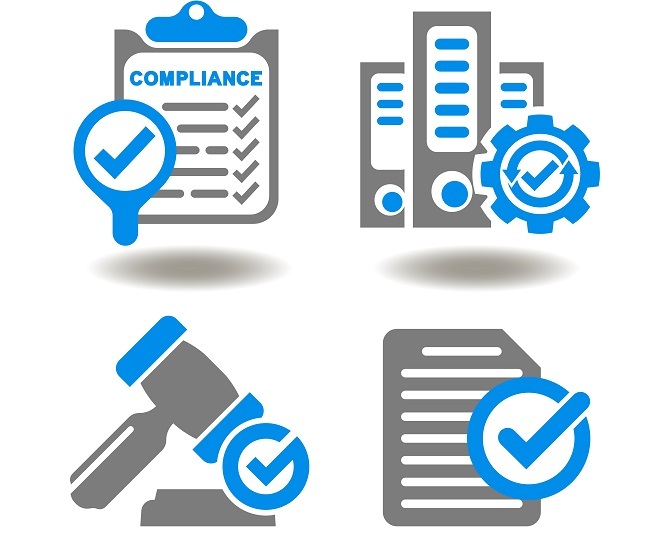
 Data Structure
Data Structure Networking
Networking RDBMS
RDBMS Operating System
Operating System Java
Java MS Excel
MS Excel iOS
iOS HTML
HTML CSS
CSS Android
Android Python
Python C Programming
C Programming C++
C++ C#
C# MongoDB
MongoDB MySQL
MySQL Javascript
Javascript PHP
PHP
- Selected Reading
- UPSC IAS Exams Notes
- Developer's Best Practices
- Questions and Answers
- Effective Resume Writing
- HR Interview Questions
- Computer Glossary
- Who is Who
Interim Audit
Introduction
An interim audit is one type of review done by the auditors before the final audit takes place. The decision to examine the books of accounts in between the financial year is taken by the higher management to ensure the veracity of the financial records. But why this audit is done?
Auditing the books of any company can be both cumbersome and time consuming. The auditor has to verify and cross-check financial records before finalizing the values.

Fig 1: Interim Audit
Though auditors are professionals, there's a chance of making inadvertent mistakes while examining the books. To avoid a situation like this, some companies go for interim audit before the big game. Though all the statements are examined in this audit, the final check done at the end of financial year is considered as the main one.
Meaning of Interim Audit
An interim audit is conducted before any statutory audits to ensure that the company operates by the law and that transactions get accurately recorded in the books of accounts. The primary objective of this audit, which happens over two fiscal years, is done to detect any financial issues in the books and take corrective measures right away.
How does Interim Audit work?
This is an evaluation method of the books of accounts before the financial year to find out any fraudulent activities or errors and resolve them by taking preventive steps. Interim audit aims to elevate the overall efficiency of the company. The financial statements are studied by the auditors, where they'll understand the business and associated risks.

Fig 2: Auditors verifying the financial statements
The auditor will get to know the key areas to focus post initial examination of the books. Then, testing is performed on the income statement items. This audit tells whether the company is able to make interim dividend payments to the shareholders or not.
If there is a pressing need to furnish the reports on a specific date, an interim audit is frequently employed since it allows the auditor to complete most of the comprehensive audit work faster. This form of audit, therefore, involves a full audit of the books for part of the year, from the last balance sheet to the start of the interim accounting period.
Purpose of Interim Audit
Let's examine the actual purpose behind an interim audit.
Checks whether the business pays interim dividends to the investors or not. It ascertains the profit for that period because investors and shareholders perceive the interim dividend payment as valuable.
Companies can avoid fraud and other inconsistencies with the help of interim audit. It significantly contributes to employee efficiency. It provides a deeper understanding of company's business and line of work.
Characteristics of Interim Audit
A few distinguishing features of the interim audit differ from traditional annual audits. The following are the characteristics of the interim audit ?
If the business needs to revalue or revaluate its position over time, an interim audit helps determine the book value of the company's existing shares.
The organisation that conducts the interim audit is regarded as more trustworthy than those organisations for which it is not.
It is undertaken over two periods; it additionally gets termed a half-yearly audit.
It comprehensively evaluates all the contracts recorded into or transacted with the company over a specific timeframe.
It is occasionally carried out to ascertain the shares' book valuation.
Pros and Cons of Interim Audit
Interim audits have certain pros and cons. They are as follows ?
Pros of the Interim Audit
The pros of Interim Audit are as follows ?
Speed ? Compared to other audit systems, the interim audit makes it possible to complete the final audit much more quickly as it gets finalised before the result date.
Adaptability ? Interim audit is much more appropriate for medium and large organisations, as there's a lot of information to examine and verify.
Error Free ? This kind of audit identifies mistakes and scams, which helps the company to be aware of their financial dealings and keep them one step ahead. The auditors employ prompt actions to rectify these issues.
Fluency ? It exerts ethical influence on the staff to do accountancy tasks properly, helping prevent mistakes and make the workflow fluent.
Cons of Interim Audit
The cons of interim audit are as follows ?
Increased workload ? After completing the interim audit, you are responsible for writing audit notes, thereby increasing the workload.
Unsuitable for small businesses ? Small businesses have fewer financial transactions, so an interim audit is not beneficial for such enterprises.
Interference ? The office's working atmosphere and regular operations get disrupted by interim audits.
Expense ? Several procedures are necessary for an interim audit, which eventually increases the organisation's overall costs.
Process of Interim Audit
Here is the overall process of an interim audit.

Fig 3: Interim audit process
Examine the organisation's threshold.
Examine an organisation's decision-making hierarchy.
Examine the work done by the company and the industry in which it operates.
Obtain information about the company from both internal and external sources.
Conduct a discussion with the upper executives or the company's audit committee.
Afterwards, take the letter from management stating that the information and details provided for examination are accurate and complete in every aspect.
Direct the review according to the rules established by the evaluating guidelines board of trustees.
Record the operational documents the auditor compiles throughout the audit.
Issue a qualified audit report if materially misrepresented, or the opposite if they are not, considering the impact on the business.
Who does Interim Audit?
The auditor performs preliminary audit work during the interim audit, which takes place before the end of the financial year. The purpose of the interim audit is to expedite the presentation of the financial statements to management so that the final audit gets completed sooner. The person conducting the audit must be certified by the accounting and auditing regulatory authority or possess specific qualifications to perform the duties.
Examples of Interim Audit
To better understand its functions, here are a few examples of an interim audit.
Example 1
For example, radio and television sets get manufactured by small businesses. $10 million in sales is the typical monthly average. As a result, the annual sales total is $25 million.
If the team decides to conduct testing in two tranches?interim and final?the auditor can choose to conduct all testing during the final year-end audit or to conduct some testing during the interim period or the remaining period.
Because the audit team will only have three months to test after the year's end, the nine months of sales will be more effective. After the end of the year, the audit staff will have less work to do, and the client will feel less pressure because the revenue transactions will get tested in two phases rather than over 12 months.
Example 2
If a corporation intends to issue an interim dividend on October 25, 2023, its account audit would have to occur throughout a portion of the year, from May 5, 2023, to October 25, 2023. The audit will also be known as an interim audit.
Conclusion
An interim audit focuses on testing for less than a year, making it a reliable option for large agencies. This tutorial discussed all the necessary points that set apart an interim audit from other audits. With an interim audit, there will be no necessity to give a review assessment here. However, if the appointment is driven by management or regulations, the auditors must undertake and report on the interim financials.
FAQs
Q1. What do you mean by internal audits?
Ans. A formal report and a preliminary report, either in the form of a memo, may be part of the internal audit reporting.
Q2. What distinguishes the final audit from the interim audit?
Ans. The final audit is cost-effective, prevents friendly ties between audit staff and clients, and ensures a smooth workflow. An interim audit takes place in between two annual audits. Its goal is to make it possible for the business to pay a dividend in the interim.
Q3. What else is the term for an interim audit?
Ans. As it takes place between two periods, it may also be referred to as a half-yearly audit.

